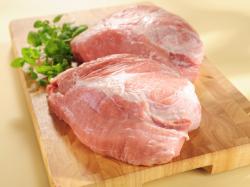US Pork Industry Expanding In Response To Meet Global Demand
June 16, 2017 | 3 min to read

DENVER — Strong profitability and rising global demand create a strong incentive for U.S. pork processors to expand capacity. The impending increase in demand for hog supplies will create favorable terms for producers, while intensified competition among processors could lead to a short-term compression in packer margins, according to a new report from CoBank.
"U.S. pork packing capacity will increase eight to ten percent by mid-2019, when five processing facility construction projects are complete and fully operational," said Trevor Amen, an economist with CoBank who specializes in animal protein. "Hog production is expected to increase two to four percent in both 2017 and 2018 to meet the demand for more supplies, with the bulk of the increased production coming from small to mid-size pork producers in the Midwest."
Three new state-of-the-art pork processing facilities with the capacity to process more than 10,000 hogs per day are currently under construction. Two of the facilities are being built in Iowa and one in Michigan. Two smaller plants with daily capacities of less than 5,000 head are being renovated in Missouri and Minnesota.
"As each of the new projects comes online, hog supplies will adjust upward," said Amen. "Transitional market conditions such as these typically come with increased price volatility over the short term, and bargaining leverage will shift in favor of producers as the expansion of hog supplies catches up with processing capacity."
However, lean hog prices may soften until a new market equilibrium is established and an increase in exports fills the demand gap, added Amen.
Exports Will Play a Critical Role
The success of this substantial increase in processing capacity and hog production hinges largely on continued global demand for U.S. pork. While exports in 2017 are up 15 percent through April, total annual exports for the year are expected to increase five to eight percent, with an additional increase of three to six percent in 2018. Exports have been a boon to the industry, but the potential risk of export disruption carries severe consequences.
"Continued global demand for U.S. pork will be a critical factor as the market adjusts over the next two years," said Amen. "Domestic consumer demand has been very strong and we expect that to continue. However, prospects for a further boost in domestic demand are limited. Therefore, export markets will have to absorb the production increases." U.S. producer access to foreign markets will be critical to preventing a domestic supply glut as well as deterioration in margins for both producers and processors.
Processing Facility Upgrades to Continue
To remain competitive, processors must continuously upgrade or replace existing facilities to implement new technology, including automation and mechanisms that ensure compliance with stricter food safety standards.
"Historically, initial losses in new or expanded plants are inevitable and packer margins are typically narrower than pre-expansion," said Amen. "But margins improve and normalize following the transition period and processors are better positioned with efficiency gains and an improved ability to customize production."
Longer term pressure could persist for older plants as aging technology inhibits efficiency gains. Eventually, the cycle of replacing older infrastructure will reach its next phase and new investments take the place of retired capacity.
A brief video synopsis of the report, "New Processing Capacity Shakes Up the Hog Industry" is available on the CoBank YouTube Channel. The full report is available to media upon request.
About CoBank
CoBank is a $128 billion cooperative bank serving vital industries across rural America. The bank provides loans, leases, export financing and other financial services to agribusinesses and rural power, water and communications providers in all 50 states. The bank also provides wholesale loans and other financial services to affiliated Farm Credit associations serving more than 70,000 farmers, ranchers and other rural borrowers in 23 states around the country.
CoBank is a member of the Farm Credit System, a nationwide network of banks and retail lending associations chartered to support the borrowing needs of U.S. agriculture, rural infrastructure and rural communities. Headquartered outside Denver, Colorado, CoBank serves customers from regional banking centers across the U.S. and also maintains an international representative office in Singapore.
For more information about CoBank, visit the bank's web site at www.cobank.com.
Source: CoBank
